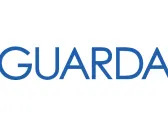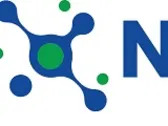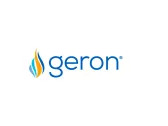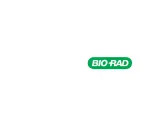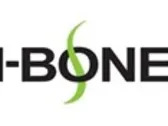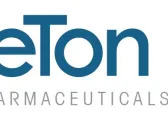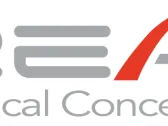Day Return
YTD Return
1-Year Return
3-Year Return
5-Year Return
Note: Sector performance is calculated based on the previous closing price of all sector constituents
Industries in This Sector
Select an Industry for a Visual Breakdown
| Industry | Market Weight | YTD Return | |
|---|---|---|---|
| All Industries | 100.00% | 11.10% | |
| Drug Manufacturers - General | 34.89% | 20.03% | |
| Healthcare Plans | 13.37% | 3.53% | |
| Medical Devices | 11.51% | 0.67% | |
| Biotechnology | 11.50% | 4.16% | |
| Diagnostics & Research | 11.22% | 9.11% | |
| Medical Instruments & Supplies | 7.03% | 17.98% | |
| Medical Care Facilities | 3.24% | 32.89% | |
| Drug Manufacturers - Specialty & Generic | 2.72% | 0.84% | |
| Medical Distribution | 2.27% | 12.42% | |
| Health Information Services | 2.12% | 16.03% | |
| Pharmaceutical Retailers | 0.13% | -61.03% | |
Note: Percentage % data on heatmap indicates Day Return
All Industries
--
<= -3
-2
-1
0
1
2
>= 3
Largest Companies in This Sector
View MoreName | Last Price | 1Y Target Est. | Market Weight | Market Cap | Day Change % | YTD Return | Avg. Analyst Rating |
|---|---|---|---|---|---|---|---|
| 954.17 | 1,003.10 | 12.39% | Buy | ||||
| 578.72 | 555.63 | 7.71% | Buy | ||||
| 162.35 | 171.47 | 5.64% | Buy | ||||
| 196.37 | 196.12 | 5.00% | Buy | ||||
| 116.55 | 140.31 | 4.26% | Buy | ||||
| 603.86 | 630.67 | 3.33% | Buy | ||||
| 112.10 | 123.27 | 2.81% | Buy | ||||
| 267.83 | 284.85 | 2.79% | Buy | ||||
| 324.53 | 328.50 | 2.51% | Buy | ||||
| 490.43 | 478.67 | 2.51% | Buy |
Investing in the Healthcare Sector
Start Investing in the Healthcare Sector Through These ETFs and Mutual Funds
ETF Opportunities
View MoreName | Last Price | Net Assets | Expense Ratio | YTD Return |
|---|---|---|---|---|
| 154.78 | 40.661B | 0.09% | ||
| 283.58 | 21.092B | 0.10% | ||
| 146.45 | 7.976B | 0.45% | ||
| 100.14 | 7.812B | 0.35% | ||
| 57.94 | 4.88B | 0.40% |
Mutual Fund Opportunities
View MoreName | Last Price | Net Assets | Expense Ratio | YTD Return |
|---|---|---|---|---|
| 235.05 | 48.824B | 0.30% | ||
| 99.12 | 48.824B | 0.30% | ||
| 141.81 | 21.092B | 0.10% | ||
| 102.03 | 15.167B | 0.80% | ||
| 101.69 | 15.167B | 0.80% |
Healthcare Research
View MoreDiscover the Latest Analyst and Technical Research for This Sector
Analyst Report: Zimmer Biomet Holdings Inc
Based in Warsaw, Indiana, Zimmer Biomet is the nation's largest pure-play maker of orthopedic devices. The current company arose from the 2015 merger of Zimmer and Biomet, both were headquartered in Warsaw, Indiana. The company designs, develops and manufactures reconstructive orthopedic implants; sports injury repair and trauma products; and related orthopedic surgical products. Its primary customers include musculoskeletal surgeons, neurosurgeons, hospitals, distributors, and, in their capacity as agents, healthcare purchasing organizations or buying groups. ZBH shares are a component of the S&P 500.
RatingPrice TargetAnalyst Report: Alcon Inc.
Alcon Inc. is a global provider of ophthalmic surgery and vision care products. Founded in 1945 and based in Switzerland, Alcon previously operated as a subsidiary of Novartis AG. It became an independent company on April 9, 2019. The company has more than 25,300 employees.
RatingPrice TargetMarket Digest: ADI, ZBH, BCE, CLF, ALC
A Primer on ESG Investing The recognition by investors of ESG (environmental, social, and governance) initiatives at companies worldwide has increased in recent years. Environmental factors relate to a company's impact on sustainability and the environment; Social factors relate to the community and societal values of a company; and Governance factors consider if management strategies are at a company are sound and ethical. ESG offer both an outline for companies to follow as well as guidance for investors. Not surprisingly, then, there has been a significant increase in the number of ESG ETFs (exchange-traded funds). History Modern ESG investing has been known by several names over the years, including SRI (socially responsible investing). The origins of SRI date back to the 1960s, during the time of South African apartheid and when investors started to avoid equities that had a connection to apartheid. People also began to exclude stocks related to alcohol and tobacco. While socially responsible investing slowly gained traction, it was not until the 1990s when the strategy took off. In 1995, the U.S. Sustainable Investment Forum released its first report on sustainable investing trends, disclosing that $639 billion had been invested in socially responsible securities. The year 2004 proved to be important for ESG as the United Nations released a report titled 'Who Cares Wins: Connecting Financial Markets to a Changing World.' In collaboration with some of the world's largest financial institutions, including BNP Paribas, Deutsche Bank, Goldman Sachs, and Morgan Stanley, the report articulated how ESG might be incorporated into financial markets. Currently, institutional and retail investors have many ESG funds from which to choose. As well, the ESG funds can provide attractive returns. The iShares MSCI KLD 400 Social ETF (DSI) is up 18% so far in 2024, was up 25% over the past year, and has popped 91% over the last five years. That compares with a 19% gain in the SPDR S&P 500 ETF Trust (SPY) in 2024, a 25% gain over the past year, and an 88% gain over the past five years. SWOT Analysis Strengths ESG investing boasts several strengths, one of which is that investors can align their financial decisions with their personal values. With many different funds and stocks available, investors can almost assuredly find ESG portfolios with which they are comfortable -- including funds that address faith-based criteria or specific causes. ESG investing also can be a powerful source of return on capital. As detailed above, the iShares MSCI KLD 400 Social ETF is on par with the performance of the SPY, but so too are many other ESG exchange-traded funds. The acts of realizing returns on investment and holding true to personal values do not need to be mutually exclusive, providing incentive for increased investment. Weaknesses Still, with strength can come weakness. ESG investors are faced with the issue of 'greenwashing.' Greenwashing is when companies are not fully transparent about their ESG progress and initiatives, this so as to appear being in alignment with the principles sought by prospective investors. In a study done by InfluenceMap of 593 ESG equity funds, 71% failed a test demonstrating how they were adhering to the Paris Agreement. Even for the 130 funds that were described as being 'climate themed,' 55% failed the test. While many funds and companies represent that they are involved with ESG, it is essential that investors do independent research before making ESG-related investment decisions. Also needed is a benchmark or industry standard for defining an optimal ESG company/fund. It is not easy to establish 'universal' ESG criteria and such an effort may be subjective and confusing for investors. Opportunities Opportunities seemingly exist for those who have yet to invest in ESG funds. There are more ESG investment options than ever before and a growing pool of resources are helping investors tailor portfolios to specific ESG criteria. Not only is the number of ESG-related ETFs rising, but there is increasing information available about each one (holdings, fees, philosophy, etc.). Also of note, governments and regulators increasingly are in support of companies that are leaders in ESG practices. Continued support from policymakers presumably will lead to growing ESG opportunities. Threats ESG investing also faces threats. The portfolios primarily are focused on the long term and may struggle during short-term economic downturns. While that generally is true for all long-equity investments, it is especially the case for relatively new and evolving opportunities. The regulatory landscape is also of concern, as ESG regulations are in their early days. The Future for ESG An ESG study from Bloomberg suggests there is a bullish future for the ESG industry. Of 789 respondents, including fund managers, government officials, and venture capital leaders, 86% view ESG investment as vital for providing a sustainable future. The study also estimated that by 2025, there will be $50 trillion in ESG assets. In recent years, there has been a growing emphasis on impact investing. It is important to remember that ESG funds and securities not only avoid harmful investments; they also target investment strategies that benefit society. Assuming that occurs, the resultant positive societal impact should, in theory, contribute to strong investment performances.
Daily – Vickers Top Insider Picks for 08/22/2024
The Vickers Top Insider Picks is a daily report that utilizes a proprietary algorithm to identify 25 companies with compelling insider purchase histories based on transactions over the past three months.





